Hermanus
Hermanus (originally called Hermanuspietersfontein, but shortened in 1902 as the name was too long for the postal service [2]), is a town on the southern coast of the Western Cape province of South Africa. It is famous for Southern Right whale watching during the southern winter to spring seasons, and is a popular retirement location, too. Although the Southern Right whale is the most prolific species in the bay, it is not the only one that visits these shores. The whales can be seen from the cliffs all along the coast from as early as June and usually depart in early-December. They were once hunted in the nearby town of Betty's Bay, but are now protected to ensure the survival of the species. The Old Harbour Museum contains several exhibitions that explain the whaling industry, and the De Wetshuis Photo Museum houses an exhibition of photos by T. D. Ravenscroft that depicts the history of Hermanus. The Whale Museum houses a skeleton of a whale and shows an audio-visual presentation of whales and dolphins twice daily.
Hermanus | |
|---|---|
 Panoramic view of Hermanus | |
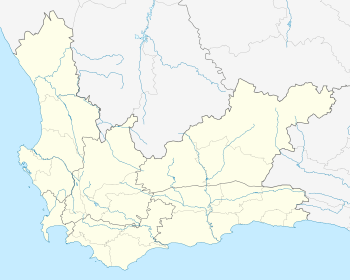 Hermanus  Hermanus | |
| Coordinates: 34°25′S 19°15′E | |
| Country | South Africa |
| Province | Western Cape |
| District | Overberg |
| Municipality | Overstrand |
| Area | |
| • Total | 17.03 km2 (6.58 sq mi) |
| Population (2011) | |
| • Total | 5,610 |
| • Density | 330/km2 (850/sq mi) |
| Racial makeup (2011) | |
| • White | 80.66% |
| • Black African | 12.25% |
| • Coloured | 5.65% |
| • Indian/Asian | 0.78% |
| • Other | 0.66% |
| First languages (2011) | |
| • Afrikaans | 44.68% |
| • English | 31.76% |
| • Xhosa | 0.64% |
| • Sotho | 0.27% |
| • Other | 22.64% |
| Time zone | UTC+2 (SAST) |
| Postal code (street) | 7200 |
| PO box | 7200 |
| Area code | 028 |

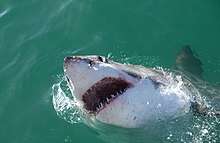
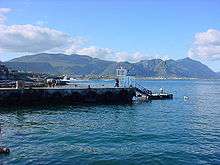
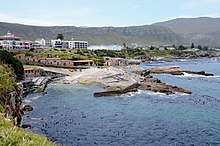

.jpg)
History
Hermanus Pieters (ca.1778–1837) was a Dutch teacher who arrived in Cape Town in 1815. He was recruited by Dutch-speaking farmers who disliked that English was the only language used in all government schools. He settled in Caledon, but taught Dutch to farmers in a wide area around that town, including the Hemel-en-Aarde Valley. He often vacationed at the spring ("fontein") in present-day Hermanus, where he fished and grazed his sheep, the place eventually became known as “Hermanus Pieters se Fonteyn”. He died before the village Hermanuspietersfontein existed. 65 years after his death the postmaster decided to abbreviate the name to Hermanus.[2]
The parents of Roger Bushell, leader of the "Great Escape" (the escape by Allied airmen from Stalag Luft III in World War II), retired in Hermanus after World War II, and are buried there. Bushell's name is one of those commemorated on the war memorial.
Location
Hermanus lies along Walker Bay on the south coast of the Western Cape. It is located about 115 km southeast of Cape Town and is connected to the Mother City by the R43 highway (or coastal R44 scenic route) and N2 motorway. The R43 continues to Cape Agulhas, the most southerly point of Africa. Hermanus is 40 km from Gansbaai, a famous spot where one can dive amongst the Great White Sharks. It is also notable that Hermanus still boasts a historic railway station building without a railway line. The founders of the town decided not to lay any tracks as this would have made Hermanus more commercial and felt that Hermanus needed to stay a small Fisherman's Village. To this day the locals still refer to it as "the village."
Sandbaai lies on the coast at the entrance to the Hemel-en-Aarde (Heaven and Earth) Valley. It is the most recently developed and fastest-growing residential area of Greater Hermanus [3]
Zwelihle, designated a "black" area by the former government, is a residential area that consists mainly of shacks.[3]
Climate
Hermanus is classified as having a warm-summer Mediterranean climate (Köppen).[4] It receives roughly 520 mm of rain per annum, the majority of which falls during the winter months of June to August in the form of frontal precipitation. Average midday temperatures range from 25 °C in February to 16 °C in July.[4] Extremes above 30 °C and under 10 °C are not uncommon. Summer and Winter months are characterised by strong South-Easterly and North-Westerly winds respectively.
Floral diversity
Hermanus is in the Cape Floristic Region and thus has one of the highest plant diversity levels in the world.[5] The principal vegetation type of this region is Fynbos, a mixture of evergreen shrub-like plants with small firm leaves. In the local Fernkloof Nature Reserve, 1,474 plant species have thus far been collected and identified.[6]
Facilities
The Space Science Directorate of the South African National Space Agency, previously the Hermanus Magnetic Observatory (HMO), is a research facility of the National Research Foundation, and forms part of the worldwide network which monitors variations of the earth's magnetic field.
Ukwanda Centre for Rural Health
Ukwanda Centre for Rural Health is in its seventh year of offering training for final year students from the Faculty of Medicine and Health Sciences in Hermanus through its Rural Clinical School (RCS).
An annual Community Partnership Function, first held in Worcester in 2013, serves to showcase and celebrate collaborative projects in the community that involve students from the RCS. This year was the first time the function was extended to Hermanus, one of the RCS training sites. The function was hosted at the Learn to Earn training facility on Wednesday, 11 October 2017.

Longitudinal Integrated Model
Ukwanda Centre for Rural Health offers a unique opportunity to a few students where they can develop their clinical reasoning skills, diagnostic skills, perform many procedures and be exposed to the realities of rural medical practice through the Longitudinal Integrated Model. Hermanus Hospital serves as one of the Longitudinal Integrated Model sites.
Beaches

Grotto Beach is the largest beach in Hermanus and has also been proclaimed a "Blue Flag" beach. Blue flag beaches meet international Environment, Safety and Management criteria.[7] Other beaches with Blue Flag status include Voëlklip, Onrus, Kammabaai, Langbaai, and Hawston. The rugged coastline also hosts many other smaller beaches, coves and tidal pools.
Whales and whale-spotting

Visitors can watch whales from the cliff-tops, from the air or via boat-based whale watching. Since August 1992, Hermanus has had the world’s only Whale Crier, the first being Pieter Classen 1992-1998, then Wilson Salukazana 1998-2006,[8] and Zolile Baleni since April 2006,[9] who sounds his kelp horn to announce where whales have been sighted. In 2005, Zakes Mda wrote the novel The Whale Caller in which the Whale Crier of Hermanus is the main character, a man who gets enthralled by a Southern right whale he names Sharisha.
The book was adapted into a 2016 movie by the same name.
Whale festival
Hermanus hosts an annual Hermanus Whale Festival at the end of September, to celebrate the calving and mating season. Eco-Tourism is the main theme of the Hermanus whale festival with the Eco-Marine Village. Residents and visitors celebrate the migration of Southern Right Whales and other marine wildlife with ocean-themed activities and exhibitions, emphasising education and environmentally responsible adventures and activities. Prior to this main whale festival a Kalfiefees (or Calf Festival) is held, to welcome the first whales (usually in August). Both festivals are characterised by food and craft stalls, environmental presentations and South African drama productions.
See also
References
- See German page: Dyer Island (South Africa)
- Hermanus Pieters: The Beginnings of Hermanus at the official
- "About Hermanus including facts as well as tourist information". Retrieved 16 September 2014.
- "Hermanus Weather". Archived from the original on 23 September 2014. Retrieved 16 September 2014.
- "The Cape Floral Region". Unesco World Heritage List. United Nations Educational, Scientific and Cultural Organisation. 10 November 2017.
- "About Hermanus including facts as well as tourist information". Retrieved 16 September 2014.
- "Beaches". Archived from the original on 27 September 2014. Retrieved 16 September 2014.
- http://www.hermanus.co.za/stories.asp?num=12 Archived April 6, 2005, at the Wayback Machine
- http://www.iol.co.za/index.php?
External links
| Wikimedia Commons has media related to Hermanus. |
| Wikivoyage has a travel guide for Hermanus. |
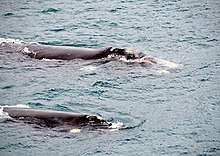
.svg.png)